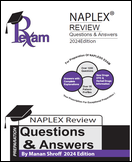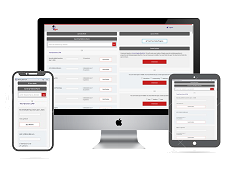
The simultaneous administration of which of the following with Qdolo is considered as a duplication of therapy?
a. Lopressor
b. Humira
c. Ultram
d. Ritalin
e. Levaquin
The simultaneous administration of which of the following with Qdolo is considered as a duplication of therapy?
a. Lopressor
b. Humira
c. Ultram
d. Ritalin
e. Levaquin
Answer: (c).
The active ingredient found in Qdolo is Tramadol hydrochloride. It is available as an oral solution. It is a schedule IV controlled substance. The simultaneous administration of Ultram (Tramadol) with Qdolo (Tramadol) is considered duplication of therapy; concurrent use should be avoided.
Qdolo is an opioid agonist indicated in adults for the management of pain severe enough to require an opioid analgesic and for which alternative treatments are inadequate.
Start at 25 mg/day and titrate in 25 mg increments as separate doses every 3 days to reach 100 mg/day (25 mg four times a day). Thereafter the total daily dose may be increased by 50 mg as tolerated every 3 days to reach 200 mg /day (50 mg four times a day). After titration, Qdolo 50 mg to 100 mg can be administered as needed for pain relief every 4 to 6 hours not to exceed 400 mg/day.
Concomitant use of opioids with benzodiazepines or other central nervous system (CNS) depressants, including alcohol, may result in profound sedation, respiratory depression, coma, and death. Reserve concomitant prescribing for use in patients for whom alternative treatment options are inadequate; limit dosages and durations to the minimum required; and follow patients for signs and symptoms of respiratory depression and sedation.
Monitor patients closely for respiratory depression, especially within the first 24-72 hours of initiating therapy and following dosage increases with Qdolo and adjust the dosage accordingly.
The most common incidence of treatment-emergent adverse events in patients from clinical trials were dizziness/vertigo, nausea, constipation, headache, somnolence, vomiting and pruritus.





